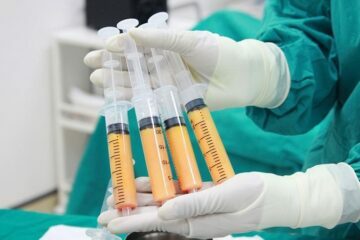Effective Ways to Deal with Diabetic Ulcers

Diabetic ulcers are one of the most significant concerns for people with diabetes. Currently, the problem affects up to 15% of all people with diabetes. Diabetic ulcers do not heal quickly and mainly require the help of a doctor for management. Dr. Autumn Savage is your trusted specialist for ulcer management. Your doctor provides efficient interventional techniques to prevent you from having an amputation.
Table of Contents
The relationship between diabetes and diabetic ulcers
Ulcers refer to open sores on the skin that do not heal as fast as other wounds. You can get ulcers anywhere on your body. However, for diabetes, wounds majorly appear on the lower sides of the body, such as the feet, toes, and legs. Diabetes is an issue to do with your blood sugar. For healthy people, their blood sugar remains steady due to a functioning internal regulator, which brings sugar levels down whenever they shoot up. However, for diabetic people, the blood sugar remains high, as their internal blood sugar regulator does not work efficiently. High sugar levels in the blood can do a lot of damage to your nerves and veins; such damage prevents blood from seeping deep to the smallest vessels preventing wounds from healing fast. Open wounds present an opportunity for germs to cause an infection, a reason why you should find your doctor fast when you have diabetic ulcers.
Diabetes is also an issue that disturbs the arteries, and when unchecked, can lead to peripheral artery disease (PAD). This issue limits the flow of blood to various extremities of your body. Damages to the arteries can lead to neuropathy and other issues in your feet, meaning that you will lose senses in your feet, making ulcers go undetected for a long time, which arise from superficial wounds.
Can you detect diabetic ulcers early and prevent them
The only way to determine whether you have ulcers is to make frequent examinations on your feet. You can also prevent ulcers from forming when you keep your blood sugars at the proper limits with medication. Other steps you can take to prevent diabetes include the following:
- Walking with shoes and other protective legwear
- Having regular checkups
- Quitting smoking
- Inspecting the skin around the leg often
People with diabetes who exercise regularly and have a balanced diet also cut the risks of ulcers, as the activities help maintain their blood sugar levels at the proper limits.
What are the methods for treating diabetic ulcers?
The first step to dealing with diabetic ulcers is debridement, which means that the team at Wound Evolution – Wound Care and Hyperbaric Medicine will peel off affected skin and remove all the damaged tissues—a process that promotes healing. The team also takes further steps to prevent the wounds from getting more significant.
Diabetes ulcers can reach deadly points if they go unchecked. However, with Wound Evolution – Wound Care and Hyperbaric Medicine, you have a chance. Reach the center via a phone call for help with your ulcers or book your place online to start the journey to diabetes wound management.
Leave a reply
You must be logged in to post a comment.





















